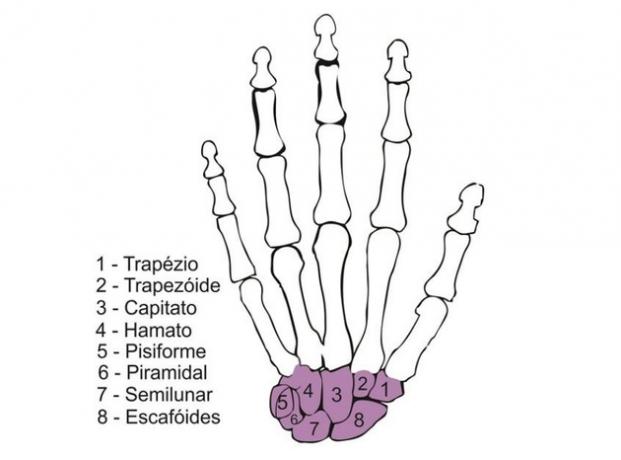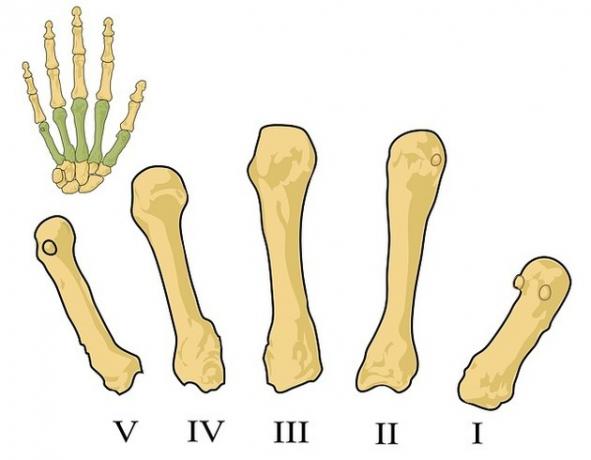The hand corresponds to the terminal segment of the upper limb, through the continuation of the wrist and ends with the fingers. In total, we have 27 bones in the hand. Everyone works together.
The bones of the hand, together with the muscles and joints, allow the handling of objects.
The main feature of the hand movements is the pinching action, thanks to the opposable thumb. This condition allows you to carry out more delicate jobs with greater precision. This enables writing, tool building, drawings, among other activities.
Regarding bone structure, the hand is divided into three distinct regions: carpus, metacarpal and phalanx.
carpus

The carpal region consists of eight bones which are arranged in two rows.
The carpal bones are:
- trapezoidal
- trapeze
- Scaphoid
- semilunar
- Pyramidal
- Pisiform
- hamate
- Capitate
metacarpal

The metacarpal represents the skeleton of the palm. It is formed by five bones equal, elongated shape, that articulate with the carpal bones and with the phalanges.
The metacarpal bones are numbered I to V starting from the thumb.
Phalanx

The phalanges correspond to the thumb, index, middle, ring and ear fingers. In total, we have 14 phalanges.
The phalanges articulate with the metacarpal bones.
Each finger has three phalanges. The thumb has only two phalanges.
The phalanges are classified into:
- Proximal Phalanges: located at the base of the finger.
- middle phalanges: between the proximal and distal phalanges. It doesn't exist on the thumb.
- distal phalanges: located on the fingertips.
Learn more, read too:
- Bones of the Human Body
- arm bones
- foot bones
- Members of the Human Body


